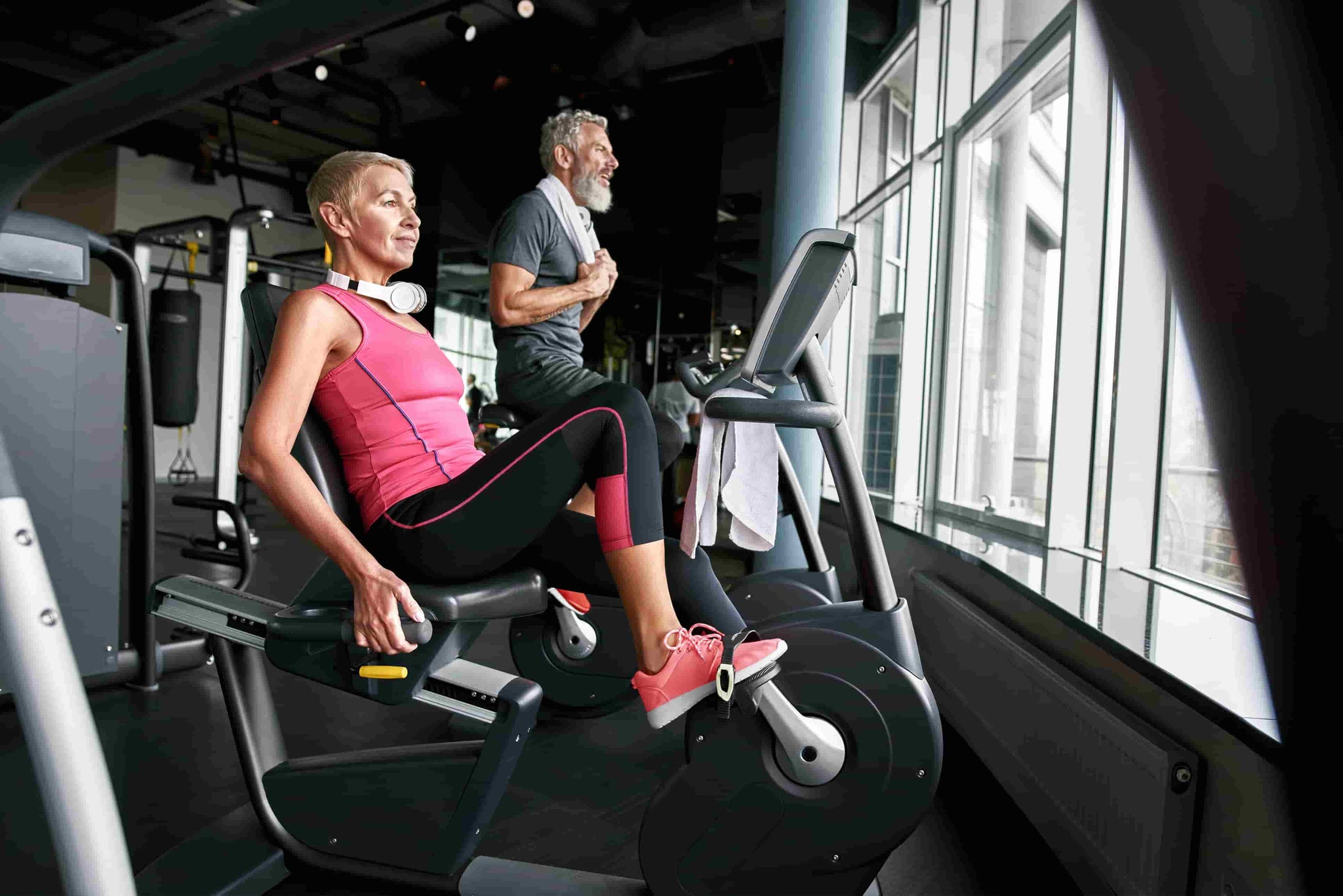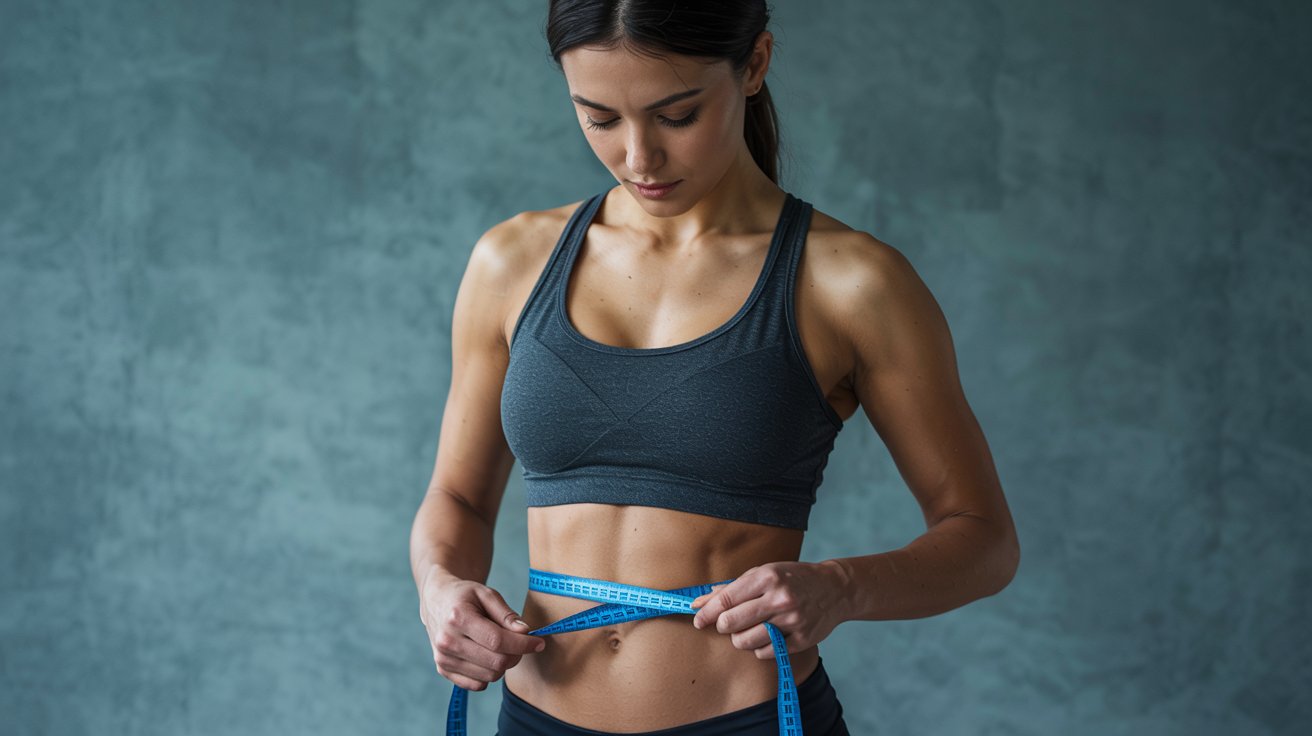Is a Recumbent Bike Good for Knees?
Written by: Vanswe Fitness
Published on: April 05, 2025. Last updated: May 08, 2025

Knee pain—whether from arthritis, injury, or post-surgery recovery—often limits traditional forms of exercise. But that doesn’t mean movement has to stop. Recumbent bikes offer a safe, low-impact way to stay active while protecting vulnerable joints.
In the following sections, we’ll explore how recumbent bikes can help with knee pain relief, post-surgery rehabilitation, and osteoarthritis management, and we’ll also recommend features to look for in a bike if knee health is your priority.
Recumbent Bike for Knee Pain
Recumbent bikes are good for bad knees, especially for individuals who experiencing chronic or post-injury knee pain. Their semi-reclined position, large seat, and forward-positioned pedals reduce pressure on the knee joint by limiting the degree of flexion and minimizing impact forces.
According to research published in The Journal of Orthopaedic Research and Clinical Biomechanics, cycling in a recumbent position can:
- Reduce compressive and shear forces across the knee joint [1; 2]
- Promote synovial fluid circulation, which improves joint lubrication and helps relieve stiffness
- Strengthen supporting muscles (e.g., quadriceps, hamstrings), which offload pressure from the joint
- Provide a low-impact cardiovascular workout, essential for joint health and weight control
💡 Tip: Begin with 5–10 minutes at the lowest resistance setting. If no pain occurs, gradually increase duration and intensity. Always maintain a 10–15° bend in the knee at full extension to avoid overstraining.
Recumbent Bike After Knee Replacement
A recumbent bike is a good exercise after knee replacement -- it's a clinically aligned rehabilitation tool that supports knee joint recovery through controlled, load-free motion. For patients recovering from total knee arthroplasty (TKA), maintaining joint mobility while avoiding excessive compressive or shear forces is crucial. Recumbent bikes provide precisely this balance.
Unique Rehabilitation Advantages
Unlike upright bikes or treadmill walking, the recumbent bike places the hip and knee in a semi-extended position, reducing the angular stress on the joint. This ergonomic alignment allows early-stage rehabilitation patients to:
- Perform closed-chain, non-weight-bearing movements, promoting joint nutrition via synovial fluid circulation
- Re-establish neuromuscular coordination of the quadriceps and hamstrings without overloading the prosthesis
- Train in a symmetrical and repeatable motion path, minimizing risk of compensatory movement patterns
- Manage pain while progressively enhancing proprioception and vascular perfusion
These characteristics are especially beneficial during the critical early phase of recovery (Weeks 3–6) when joint sensitivity is high and scar tissue formation can limit mobility.
Suggested Use Timeline for TKA Patients
This recovery timeline is based on clinical guidelines from the American Physical Therapy Association (APTA) and supported by peer-reviewed research from Bade and Stevens-Lapsley (2011) [3], who demonstrated that early and progressive rehabilitation—including recumbent cycling—leads to better functional outcomes following total knee arthroplasty (TKA).
| Post-Op Phase | Training Objective | Recumbent Bike Strategy |
|---|---|---|
| Week 1–2 | Passive ROM (if cleared) | Pedal-assisted motion only (no resistance) |
| Week 3–5 | Active ROM + light endurance | 5–10 mins, no resistance, focus on smooth cadence |
| Week 6–10 | Strength reactivation + volume build-up | Gradually increase time & light resistance |
| Week 10+ | Functional reintegration | Combine with gait drills and resistance training |
🩺 Clinical Note: Avoid high resistance settings until at least 8–10 weeks post-op, and always ensure knee flexion angle remains below discomfort threshold (~90–110° in early weeks).
Is a Recumbent Bike Good for Arthritic Knees?
A recumbent bike is good for Good for Arthritic Knees. Clinical studies show they help reduce pain and improve joint function in people with knee osteoarthritis. A 2021 systematic review published in Clinical Rehabilitation showed that recumbent biking significantly reduces pain and improves joint function in individuals with knee osteoarthritis [4].
Additionally, a biomechanical study by Reiser et al. titled "Knee loads in the standard and recumbent cycling positions" [5] found that recumbent bikes significantly reduce anterior shear forces on the knee, particularly those that place strain on the ACL (anterior cruciate ligament).
Best Recumbent Bike for Knee Rehab
According to the study "Joint contact forces during semi-recumbent seated cycling" [6], certain design factors in recumbent bikes can significantly influence joint loading—especially important for rehab patients. Based on that, here are a few features to prioritize:
- Adjustable seat: You should be able to slide the seat forward and back to get the right knee angle.
- Low step-through design: Easier to get on and off, especially important post-injury.
- Magnetic resistance: Smooth and quiet resistance that you can increase gradually.
- Comfortable back support: A supportive seat helps you maintain posture and avoid slouching.
Recommended: Vanswe RB407 Recumbent Bike
Product Hightlights
- Affordable & Beginner-Friendly – Designed for entry-level users with a budget-friendly price.
- 16-Level Magnetic Resistance – The lowest starting resistance among Vanswe recumbent bikes—ideal for those with knee pain
- Super Quiet Operation – Utilizes a magnetic flywheel, dual-belt system, and needle roller bearing for noise-free cycling.
- Bluetooth Connectivity & Digital Tracking – Syncs with Kinomap, Zwift, and a free fitness app for interactive training.
- Compact & Adjustable Design – Seat accommodates users from 5'2" to 6'1", ensuring a personalized fit.
User Experiences
"I had knee replacement 3 months ago and wanted to continue to keep/improve my Range of Motion. This bike is perfect. It took about 1 hr to put together. The seat is comfortable and adjustable (forward and back. I move the seat often during workout to get the most stretch and bend I can. The resistance is a nice feature. You can monitor your heart rate by holding handles on the sides of seat.
Bike takes up very little space. I would highly recommend!"
"I'm recuperating from a total knee replacement and needed a bike for my rehab. I'm so pleased with this bike, particularly in that the pedal resistance is perfectly consistent and adjustable. The seat slides too so I can easily adjust the pedaling arch to advance my ability to flex my knee. I had a question about assembling and adjusting the level that locks the seat in place; I was afraid I was going to break it it I pushed harder. I reached out to support and they were back with me in a few hours telling me exactly what I needed to know."
"I like this bike because I do not have to go to the gym. Within the next few months, I will need knee surgery and going to the gym is more painful than the exercising. Same quality as the gym, it gets the job done. It took me a couple of hours to put together myself, I still could not figure out how to put straps on the peddles, however, it works fine without them."
"Once we received the bike, I assembled it without any problem. Instructions are clear and I was amazed at the quality of this bike. I have used it for 1 hour straight and the seat is very comfortable and the bike does not wobble! My wife has knee issues and loves it. She has used it twice on the no resistance mode for 1 hour each time without pain! She can peddle comfortably and exercise the upper body at the same time without holding the handles. It is a very sturdy bike, good quality and good price, do not hesitate to buy it!"
"This bike is being used for rehab after surgery. As a senior woman I had to put it together myself. It took me approximately 2 hours to assemble. Very happy with how quiet it is, my husband was using it and I didn't know he was still on it until I looked over to the bike."
"Wife needed this for rehab after knee replacement surgery. Probably doesn’t have all the features of higher priced brands, but has everything and more for rehabilitation and we both have continued to use it for exercise since purchase."
"I purchased this to rehab bilateral knee replacement surgery. Easy to assemble. Love the adjustable seat and the iPad holder. All in all, a great choice."
"My physical therapist recommended a recumbent bike to help me with my knee pain. I bought this one a year ago and have been very happy with my purchase! It is very comfortable and I like the very readable digital LED monitor which also holds my tablet. Recently the monitor refused to work even after a battery change. I contacted Vanswe Customer Service by email to let them know of this situation. The next day they had a new monitor on its way to me at no charge!! WOW! I had the new monitor within the week, my husband installed it for me and it works perfectly. If only all customer service was this excellent, the world would be a bit happier place. Have no fear to order this reasonably priced and well made exercise bike. If you have any issues at all, this company will make it right."
Why Do My Knees Hurt After Using a Recumbent Bike?
Knee pain after using a recumbent bike is usually caused by improper setup or form. Common issues include:
- Incorrect seat position – Sitting too close or too far can overbend or overextend your knees.
- Too much resistance – High resistance adds joint strain; start low and increase gradually.
- Poor pedaling technique – Avoid locking your knees or pushing too hard.
- No warm-up – Skipping warm-up can lead to stiffness and discomfort.
If pain persists despite these adjustments, consult a physical therapist to check for underlying joint conditions.
Conclusion
Recumbent bikes are a knee-friendly exercise option that offers support, stability, and a smooth workout. Beginners recovering from knee issues can start with 10–15 minutes of gentle pedaling per session, 3–5 times a week, and gradually increase duration as comfort improves. They’re ideal for people with joint pain, arthritis, or those recovering from knee injuries. While upright bikes can be useful too, the comfort and design of recumbent bikes make them the better choice for knee rehab and long-term joint care.
As always, listen to your body, start slow, and make sure your bike fits you well. Your knees will thank you!
Refference
- Koehle, M. J., & Hull, M. L. (2010). The effect of knee model on estimates of muscle and joint forces in recumbent pedaling. Journal of biomechanical engineering, 132(1), 011007.
- Crossley, C. B., Diamond, L. E., Saxby, D. J., de Sousa, A., Lloyd, D. G., Che Fornusek, & Pizzolato, C. (2024). Joint contact forces during semi-recumbent seated cycling. Journal of biomechanics, 168, 112094.
- Bade, M. J., & Stevens-Lapsley, J. E. (2011). Early high-intensity rehabilitation following total knee arthroplasty improves outcomes. Journal of Orthopaedic & Sports Physical Therapy, 41(12), 932–941.
- Luan, L., Bousie, J., Pranata, A., Adams, R., & Han, J. (2021). Stationary cycling exercise for knee osteoarthritis: A systematic review and meta-analysis. Clinical rehabilitation, 35(4), 522–533.
- Reiser, R. F., 2nd, Broker, J. P., & Peterson, M. L. (2004). Knee loads in the standard and recumbent cycling positions. Biomedical sciences instrumentation, 40, 36–42.
- Crossley, C. B., Diamond, L. E., Saxby, D. J., de Sousa, A., Lloyd, D. G., Che Fornusek, & Pizzolato, C. (2024). Joint contact forces during semi-recumbent seated cycling. Journal of biomechanics, 168, 112094.
Latest Articles






